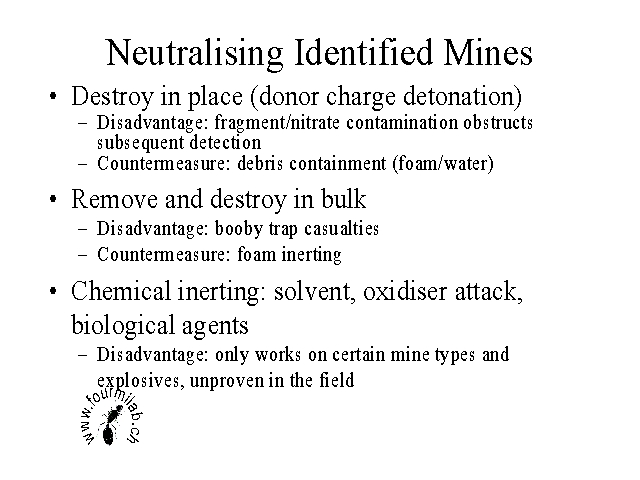

|
|
|
Once a mine has been located, it must be neutralised to render it harmless. The most obvious way to accomplish this is to detonate it by firing another explosive in its proximity, referred to as a donor charge. It is the official policy of the U.S. Department of Defence that all hostile mines be destroyed in place by donor charges; variances from this policy can be granted only by the Secretary of Defence. Most people clearing mines in the field consider this to be unwise—detonating a mine contaminates the surroundings with debris which increases the false-positive detection rate by a large factor and releases nitrates which render dogs unusable for a week after the detonation. Still, in-place destruction poses the least risk to the operator.
Most mine clearance operations remove mines from the ground, separate detonator from charge, and destroy in bulk by donor charge detonation in a pit near the minefield. Removal poses a risk to the operator if the mine is booby-trapped; foam blocking of mechanical booby traps is being studied, but tilt-switch and optical booby traps remain a risk.
Certain mines and their detonators can be attacked chemically. While not applicable to all mines, it may prove useful when a field is known to contain only mines vulnerable to a given technique.